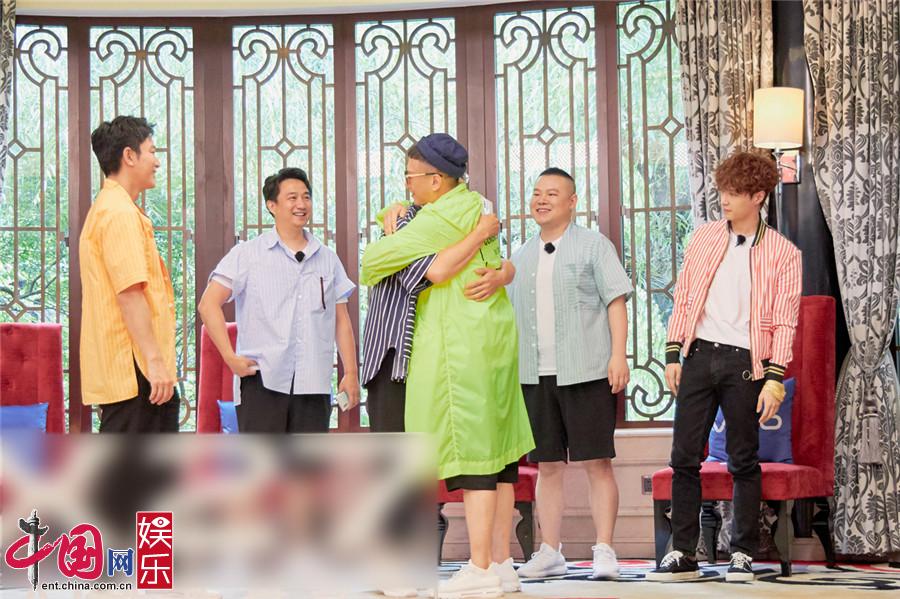
Article | Hong Kong Stock Research Institute
Recently, following the termination of Wanda Commercial Management’s bond issuance plan, the Securities Supervision Commission questioned the authenticity of Wanda’s shopping mall sales data, and the freezing of Zhuhai Wanda Commercial Management’s equity by the court, Wanda Commercial Management encountered "water reverse" again – Fitch released a report downgrading Wanda Commercial Management’s rating, and believes that Zhuhai Wanda Commercial Management may not be able to complete the listing before the end of 2023.
The influx of negative news has cast more and more clouds over Zhuhai Wanda Commercial Management’s fourth impact on Hong Kong’s IPO.
And in the Wanda Group debt pressure, nearly 40 billion yuan bet the deadline is approaching, the Zhuhai Wanda Commercial Management impact on Hong Kong stocks, is also considered to be Wanda’s last battle, for this reason, Wanda opened a new round of "sell sell sell". So, in this case, carrying Wanda’s future asset-light model, can it still be bright?
Zhuhai Wanda Commercial Management is the product of Wanda’s commercial real estate sector.
Wanda’s commercial real estate sector once included commercial real estate development, residential real estate development and commercial property management. It is worth mentioning that Wanda’s real estate sales revenue reached 160 billion yuan at the peak, and then with the official proposal of "real estate and housing not speculation", the development of the real estate industry has gradually returned to rationality.
Under this trend, Wanda Commercial changed its name to Dalian Wanda Commercial Management in 2019, and from then on, its business focus shifted to commercial management. In this regard, Wang Jianlin clearly set the tone that the real estate group "does not pursue sales, exists for commercial management, and digests Wanda Plaza residential facilities every year to maintain tens of billions of sales." This choice is also in line with the development trend of the industry.
At that time, China’s commercial plazas were in the second half of the rapid expansion cycle. Data show that from 2016 to 2021, the growth rate of China’s stock commercial plazas, although declining, still maintained an average annual growth rate of about 15%. The total number of commercial plazas increased from 2,862 to 5,936. For the business management giant Wanda, the business management business undoubtedly has a lot of room for development.
But since then, with the high land prices in first- and second-tier cities and the frequent emergence of "land kings" in the core area, Wanda’s previous asset-heavy business management model of self-built commercial plazas has been unsustainable due to the need to invest a lot of money. Therefore, in 2021, Dalian Wanda Commercial Management will divest its business again, and establish a new subsidiary Zhuhai Wanda Commercial Management to conduct asset-light operations in commercial property management business, and strengthen its business layout in third- and fourth-tier cities.
In fact, compared with real estate companies such as Vanke, Country Garden, and China Resources, which mainly focus on residential development, Wanda has accumulated profound experience in the operation and management of commercial plazas. Moreover, the shift in the focus of industry development has also provided a rare opportunity for its expansion in third- and fourth-tier cities. Since the beginning of the new century, in the construction frenzy of Chinese shopping centers, there have been obvious geographical stratification. In the first ten years, 60% of the new shopping centers were concentrated in four first-tier cities, and then began to gradually extend to second-tier cities. In recent years, with the increasing vacancy rate of shopping centers in first- and second-tier cities, the expansion of the industry has also begun to sink.
With the continuous improvement of brand power in low-tier cities and the advantages of low capital investment and fast replication of the asset-light model itself, Zhuhai Wanda Commercial Management has experienced a wave of expansion. According to the prospectus, by the end of 2022, Zhuhai Wanda Commercial Management managed a total of 472 commercial plazas, of which 288 were from the parent company and 184 were owned by independent third parties, accounting for nearly 40%. In contrast, in recent years, real estate companies that have also begun to develop an asset-light model have made slightly slower progress. For example, China Resources Vientiane Life, a subsidiary of China Resources Real Estate, has an operating income of only 4.20 billion yuan as of 2022, and the projects under management still mainly come from the parent company, accounting for 86%.
At the same time, Zhuhai Wanda Commercial Management’s operating performance is also quite eye-catching. According to the prospectus, Zhuhai Wanda Commercial Management will achieve revenue of 27.10 billion yuan in 2022, net profit will reach 7.50 billion yuan, and the return on net assets is quite high. Its net assets equivalent to 4% of the parent company’s net assets contributed 72% of the total profit of the parent company Dalian Wanda Commercial Management. Strong profitability has also made Zhuhai Wanda Commercial Management Wanda’s "cash cow". From 2019 to the first half of 2022, the cumulative cash dividend will be 13.273 billion yuan, the vast majority of which will flow to Wanda Commercial Management, which holds nearly 80% of the shares.
If you look at it alone, after layers of stripping, Zhuhai Wanda Commercial Management seems to have "crossed a thousand mountains in a light boat". However, when you zoom in to the entire Wanda system, things may not be so easy. It can be said that Zhuhai Wanda Commercial Management’s light asset operation is still moving forward with a heavy load.
When Zhuhai Wanda Commercial Management was established in 2021, it introduced a group of heavyweight investors up to 38 billion yuan in financing. As a bet, Zhuhai Wanda Commercial Management needs to be listed before the end of 2023. If it cannot be listed as scheduled, it will not only have to repay the entire investment of 38 billion yuan in cash, but also pay an additional 8% interest.
Now, after the failure of multiple submissions to the Hong Kong Stock Exchange, the end of the bet is approaching. At the same time, due to multiple factors, Wanda Film and other sectors continue to slump, and financing is limited, Wanda Group’s debt problem has become increasingly prominent.
On April 28, Dalian Wanda Commercial Management disclosed the 2022 corporate bond report on the Shanghai Stock Exchange. As of December 31, 2022, the company’s short-term borrowing balance was 5.046 billion yuan, an increase of 948.74% year-on-year; the non-current liabilities due within one year were 68.768 billion yuan, an increase of 304.12% year-on-year. In June, Wanda Commercial Management issued bonds with a quota of 6 billion yuan and was forced to terminate the issuance. The financing channels were significantly tightened, which was related to Zhuhai Wanda Commercial Management’s delay in listing.
It can be seen that for Wanda, the Zhuhai Wanda Business Management sprint IPO is largely an important attempt to revitalize the overall situation. But even putting aside the pressure of capital and other aspects and returning to the asset-light operation model itself, Zhuhai Wanda Business Management is also facing no small challenges.
Compared with the asset-heavy model, the asset-light model has two main advantages. First, it is no longer necessary to pay attention to land acquisition, construction, etc., but focuses on the operation of shopping malls. After the professional division of labor is clearer, it can give full play to its strengths, thereby improving business performance. Second, the traditional asset-heavy model itself has accumulated a large amount of funds, and its expansion speed is bound to be constrained by the scale of funds, while the asset-light model only exports brand and management, which greatly reduces the demand for funds, so it can achieve rapid expansion, and once the operation model is formed, it can be quickly replicated, and the scale effect is more prominent.
As mentioned above, Zhuhai Wanda Commercial Management has been able to expand significantly, largely due to the asset-light model itself. However, after a wave of rapid expansion, Zhuhai Wanda Commercial Management’s subsequent continued growth is also facing uncertainty.
In recent years, under the policy tone of reducing leverage and debt, there are not a few real estate enterprises that attach importance to the asset-light model, such as Country Garden, Longhu, Vanke Printing, China Resources Land, Joy City Holdings, and Baolong Real Estate. They have all accelerated the layout of asset-light projects. For example, Xincheng Holdings will have 31 Wuyue Plaza openings in 2023, and sinking cities will dominate.
At the same time, the oversupply of domestic commercial plazas has gradually become apparent. Data show that from 2017 to 2022, the number of commercial plazas with a rental rate of less than 70% in China increased from 7,800 to 10,948, and it is estimated that it will reach 13,182 by 2027. With the overall oversupply compounded by the influx of many leading real estate enterprises, the market competition in the commercial management track may become more intense.
In this competition landscape, although Wanda business management plans to open 51 in 2023, and focuses on the distribution of third-, fourth- and fifth-tier cities, with the rise of a number of unique emerging business entities, the increase in its acquisition may be more limited.
Moreover, under the predicament of debt pressure, there are frequent news of Wanda’s sale of projects in the market. After the "century sale" of 13 cultural tourism projects and 77 hotels packaged and sold in 2017, Wanda seems to be going to stage "selling, selling" again this year. Relevant actions include selling Wuhan Hanjie Wanda Plaza to SKP Group, transferring more than 80% of the equity of the partnership to China Huarong, reducing its holdings of Wanda Film 37.1877 million shares and cashing out 447 million yuan. In addition, there are rumors in the market that Wanda will sell more than 20 shopping malls in Jiangsu, Zhejiang and Shanghai.
The non-stop sale of assets has also attracted speculation that Wanda’s so-called "light assets" are actually "clearing assets", and some industry insiders believe that Wanda’s clearing assets may now affect the basic business of Zhuhai Wanda Commercial Management.
However, according to Wanda Group, the follow-up operation rights of the equity transfer projects are still retained by Wanda Commercial Management, which is not affected by the equity change, and most of the projects sold are heavy asset projects and are not under the umbrella of Zhuhai Wanda Commercial Management. From this point of view, there may be no need to worry too much.
In addition, in the medium and long term, the industry still has room to explore its business potential in the future. The main reason is that in the construction of a new development pattern, with the increasing fundamental role of consumption in economic development, shopping malls still have great development value as large-scale physical consumption platforms that can meet a variety of needs.
In terms of management scale, Zhuhai Wanda Commercial Management is already the world’s largest commercial square operating company, with a construction area of 65.60 million square meters in the management mall, exceeding the combined second to tenth place in China. From the perspective of the rental rate, an important indicator to measure the operation capacity of business management enterprises, Zhuhai Wanda Commercial Management’s leading position is also very consolidated. According to the prospectus, as of 2022, the average rental rate (excluding parking spaces) of Zhuhai Wanda Commercial Management reached 98.6%; over the same period, Xincheng was 95.13%, Longhu was 93.9%, and the printing power was 93.2%.
Based on this, if Wanda Commercial Management continues to strengthen its refined operations, establish a better ecosystem for its asset-light model operation, and meet the current stock demand to the greatest extent, such as its recent launch of the "Wanda Smart Business Platform", which provides integrated value-added services for merchants in the four scenarios of location selection, rental, store opening, and operation, it may be conducive to breaking through many constraints and promoting the potential of the asset-light model to a greater extent, thereby demonstrating greater investment value and taking this bumpy road to listing.
































